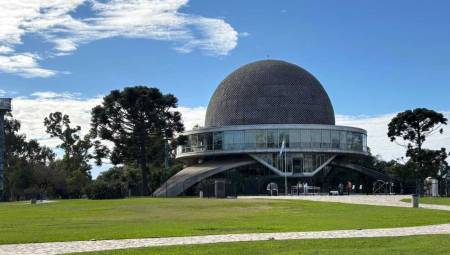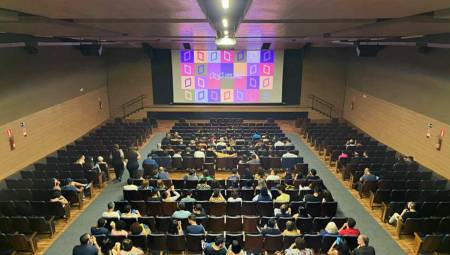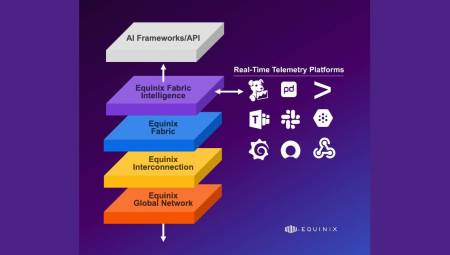 Through the adoption of TSN protocols, system designers and engineers will be able to make data transmissions at certain time intervals (deterministic) and with a guaranteed arrival time (synchronization), an essential requirement for AV systems.
Through the adoption of TSN protocols, system designers and engineers will be able to make data transmissions at certain time intervals (deterministic) and with a guaranteed arrival time (synchronization), an essential requirement for AV systems.
By Graeme Harrison*
The Internet of Things (IoT), a universe of objects as diverse as consumer electronics, coffee makers and heart monitors integrated with technology that allows them to collect and exchange data without any human intervention, is the latest breakthrough and is spurring technological evolution on a massive scale.
Perhaps the most important part of such an evolution for the Internet of Things is the TSN standard, developed to achieve timely data transmission in network environments. Many companies that develop products for IoT such as Intel, Cisco, GE, and National Instruments (NI), consider the TSN standard as the technology that makes this new and elaborate universe possible.
So what is TSN, and how is it different from AVB? What does the TSN do for the Internet of Things? And what does all this have to do with the professional audio and video sector?
TSN and AVB
In 2004, the IEEE began a study group on Ethernet for AV transmission. The working group ratified a collection of low-level IEEE 802.1 standards, as well as some higher-level IEEE 1722 standards with specific applications for synchronizing audio and video streams. This group became the Audio Video Bridging (AVB) working group that currently serves four industries, namely the professional AV sector, consumer electronics, automotive and industrial control sector. At the end of 2012, IEEE changed the name of the group and became the Time Sensitive Networking working group (timely transmission of data in networks), a designation that more accurately reflects the focus of its broad scope of work, hence the AVB protocol currently used.
In short, TSN is an open standard (new to the professional audio and video industry) that could finally eradicate the time lost in the process of deciding which protocol to use in an AV system. Simply put, the TSN takes the conversation beyond protocols and concentrates on a broader discussion on how to integrate the various media and systems we use into a networked solution.
TSN and The Internet of Things
Within today's Ethernet technology, the possibility of ensuring the timely arrival of data faces two obstacles: the speed and order in which data packets are received. The TSN addresses both issues, providing synchronized and deterministic data packet transmission in a timely (or low-latency) manner. Companies that develop IoT products consider these characteristics of the TSN fundamental for the transmission of IoT data in different industries and applications.
What do TSN and the Internet of Things have to do with the professional audio and video industry?
The needs and expectations associated with audio and video are growing and evolving. Organizations in all types of industries are demanding more AV features, including the ability to connect more people across different media and devices. As AV solutions evolve, so will the expectations that are woven around them. Because AV signals are increasingly residing on the network, they are becoming part of an ever-expanding ecosystem of computing and smart buildings. The logical step to follow is for professional AV systems to become part of the Internet of Things, which implies that professional AV devices must interact very well on the network with their IoT counterparts (for example, not using too much bandwidth, keeping data packets in the precise order and doing so in a timely manner). This positive interaction will enable a smooth transition to a truly integrated mixed-use network.
In addition, because the TSN is an open standard, commercial ownership is removed from the development process. The elimination of single-source developments and patented tariffs equalizes the conditions of participation for companies in the market. Anyone can access the standard, which means that everyone has the opportunity to develop new products that fit it, leaving the door open for manufacturers in the professional audio and video industry to explore new vertical markets.
History has shown that everyone, from manufacturers to end users, benefits from having both an open standard and a group of stakeholders committed to developing and promoting common technologies. Two examples of success are the DVD Forum, which promoted the unified DVD standard, and the Wi-Fi Alliance, which advocated standards for wireless networks. Now the AVnu Alliance joins the list to promote the adoption of AVB/TSN standards.
The AVnu Alliance is a consortium of technology companies (from Intel and Cisco to BMW and Gibson) with a presence in the professional audio and video markets, the automotive industry, consumer electronics and the industrial sector. Its members develop and manufacture products according to IEEE open standards, with the overall goal of achieving interoperability. Through the independent third-party testing and certification process implemented by AVnu, it is ensured that all certified products comply with IEEE open standards for low latency, synchronization and deterministic data transmission, and that they can operate with third-party certified products in a mixed ecosystem that is easy to configure and use. The Alliance's testing and certification process benefits the end user by allowing integrators to choose best-in-class products without wondering if the selected products will work well together.
The efforts of the AVnu Alliance are gaining speed and receiving increasing public support. Recently, the AVnu Alliance appointed Gary Stuebing, Cisco's manager of IoT engineering and standards, as chairman of its board of directors, while Kevin Stanton, Intel's chief engineer, was named president. This measure not only seeks to place key people in the industry in decision-making positions, but is a clear sign of public support and the importance of AVB/TSN standards.
Why should the professional audio and video market care?
The TSN standard and the Internet of Things are about to make a big impact on the professional audio and video market. The IoT will bring with it a new level of interdependence between systems that will transform the way technology interacts, reshaping markets, creating new products and redefining the processes that power today's systems and products.
At the same time, the TSN will enable accurate media management, control and transmission in an integrated network. Through the adoption of TSN protocols, system designers and engineers will be able to make data transmissions at specified time intervals (deterministic) and with a guaranteed arrival time (synchronization), an essential requirement for AV systems that transmit different content to various locations in response to emerging needs and at predetermined times.
What will most immediately impact the audiovisual industry is the need for TSN switches. Several vendors are already offering these types of switches and other companies such as Cisco have already expressed interest in the development of this new hardware, a promising sign that in the not too distant future there could be more switches available on the market.
The other point of impact will be the demand for smaller endpoints by companies adopting the TSN standard. This demand will imply that the audiovisual industry will have a supply of low-cost terminals at a faster rate than in the past. In addition to audio endpoints, both Axon and Barco already produce video terminals and will surely also manufacture other new video products that employ the TSN standard.
As the TSN standard evolves, the AV market can count on the possibility of completely new technologies based on this protocol, which take advantage of benefits such as the greater number of channels or the continuous reduction of latency.
AVB, as a subset of standards within the TSN protocol, continues to gain acceptance within the IT community and will benefit from the future evolution of the TSN. As more industries demand and take advantage of high-speed, synchronized, deterministic digital transmissions with a large number of channels, the audiovisual industry will expand into markets that were previously considered outside the typical scenarios or areas of strength of the sector.
How should the professional audiovisual industry prepare for the impact that the TSN protocol will have?
Most likely the TSN protocol will go through a series of revisions before becoming the standard of use. Meanwhile, networked media systems will continue to gain acceptance among IT departments, leading to greater collaboration between computing and AV disciplines. To be prepared for this imminent development, AV system integrators must take a change-oriented approach to their workflows if they haven't already, as industry transformations will continue to occur rapidly as Developments in IoT advance. The TSN protocol enables a wide range of possibilities, from smarter building designs, to greater efficiency of networked systems or better energy sustainability through solutions that take advantage of the benefits of energy efficiency in Internet networks (E3). Opportunities abound for integrators who are prepared to take advantage of them. Meanwhile, AV professionals can confidently prepare for the proliferation of new AVB/TSN switches, the ratification of IEEE specifications for timely data transmission, and the development of new classes of AVnu interoperability standards.
In conclusion, AV specialists, whether they are integrators or consultants, need to think beyond the traditional audiovisual universe, learn about what is happening in other technology industries and be open to adopting a philosophy that privileges innovation and that allows them to optimize and unify the audiovisual industry and the computer sector.
*Graeme Harrison is Executive Vice President of Biamp Systems.









































































































